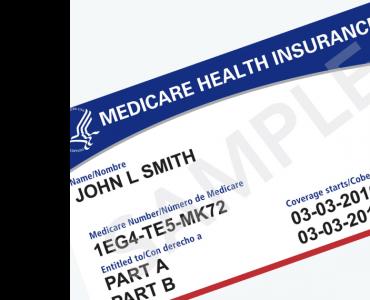How Does Medicare Work
Medicare is the American program that helps to provide health insurance for people who are over the age of 65. It also helps people with disabilities to have healthcare coverage, and makes it so that people who are in end-stage renal failure can get covered as well. It’s an important program and without it, many people might find themselves up a creek without a paddle. The program starts in 1965 and before that it is estimated that as many as 40% of elderly people didn’t have any health coverage. This is a nightmare when you realize how many health problems can develop in your old age.

How to Enroll in Medicare
When you turn 65, you may be automatically enrolled in Medicare, but not everyone is. You will need to see what category you will fall into - the automatically enrolled or not. If you are receiving social security or railroad retirement benefits, you will automatically be enrolled in Medicare parts A & B (more on what these parts are about later). If you are disabled you will also automatically get enrolled into Medicare when you’ve been on social security for 24 months AKA 2 years. If you are not in any of these categories, so basically if you do not start collecting social security when you are 65, you will need to enroll. If you don’t enroll when you turn 65 you may have to pay a late-enrollment fee, especially if you did not have any other type of health coverage. If you miss the enrollment period which is generally six months after you turn 65, you can join in the open-enrollment period which is typically from January 1 - March 31 of any given year.
Compare Medicare PlansMedicare Plans
-
Plan ARemember earlier when we told you we’d tell you all about the different Medicare parts? Well, that time is now. There is Medicare Part A which has no premiums and very low costs. The things covered by this part of Medicare are hospital stays and inpatient care. Any medications that you get while in the hospital would be covered. This also covers some skilled nursing facility care, some home care, and hospice care. While Part A doesn’t have a premium, there is a deductible of about $1300. Medicare Part A is part of the main part of Medicare into which you can get automatically enrolled when you are eligible.
- Plan BMedicare Part B covers all the usual things you would want it to cover like doctor’s visits, lab tests, x-rays and normal things like that. The only thing it doesn’t cover as far as your daily medical needs is prescription medications. This section does have a premium that is generally based on your income. If you are low enough income you will have some help from Medicaid to help pay for it. Luckily the deductible for Medicare Part B is much less than for Medicare Part A, as it is only $183 per year, but the premium is about $134 per month.
- Plan CMedicare Part C is mostly referred to as Medicare Advantage. This is a special program that combines Medicare parts A & B in private plans put out by companies that are contracted by Medicare. These are private plans that may include some things that are not usually covered my Medicare like vision, dental or hearing. Luckily the maximum out of pocket cost for any Medicare Advantage plan can only be $6,700, so while you might pay more than other types of coverage, you won’t be stuck paying so much that you can’t bear it.
- Plan DFor the longest time there was no help for seniors to pay for prescriptions, until President Bill Clinton suggested Medicare Part D. It was President Bush the second who signed it into law, and it was finally enacted in 2006. Medicare Part D makes sure that you will have some help to pay for your prescriptions when you turn 65. There is a small premium and a deductible of $405. After you pay the deductible you will pay only 25% coinsurance on your prescription until you pay $2700 out of pocket. Then you will pay more of a coinsurance until you have paid $5000 out of pocket. At that point extra special coverage will kick in and cover you up to the point where you only have to pay 5% coinsurance. It sounds a little confusing, but it works.
- Plan MedigapMedigap plans are special private health insurance plans that could cover certain aspects of Medicare. Some of them cover your deductibles for Parts A & B, and others cover your health expenses when you are out of the country so that you could have a happy and carefree retirement. Still others cover other out of pocket expenses so your overall expenses may be lower. However, these independent plans cost your own money, so you have to decide if you think it would be worth it.
Details and Limits of Medicare
Medicare has several limits of what it will cover. For example, when it comes to skilled nursing care, you will get days 1-20 for free. After that, you will have to pay a coinsurance for days 21-100. They only cover 100 days of skilled nursing care per period (year) so; hopefully you don’t need more than that! Luckily hospice services are covered without any cost-sharing which is a nice comfort at the end of a loved one’s life. When it comes to Medicare Part B you usually pay 20% of the cost of any procedures that are approved by Medicare.

Medicare Doctors
To see a doctor through Medicare you really want to see one who takes Medicare coverage through an agreement. Then you will only have to pay the 20% coinsurance. If you see someone who has not signed an agreement with Medicare, they can charge you an additional 15%. Doctors who have no affiliation at all with Medicare can require you to pay up front and then you will have to submit the claim to Medicare at a later date.
Compare Medicare Plans

